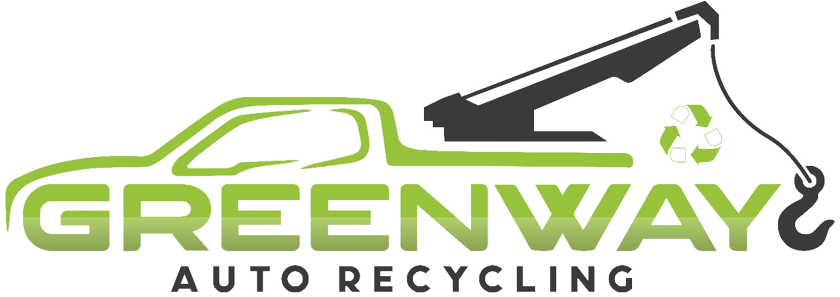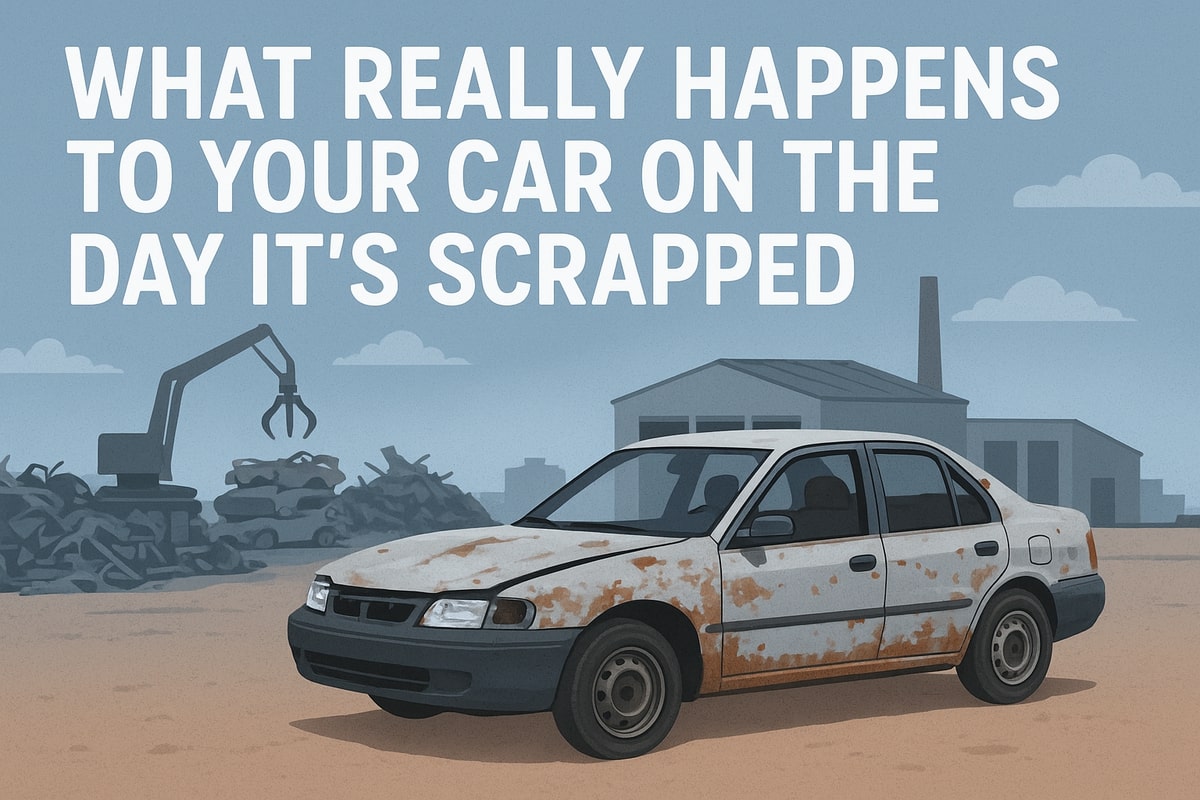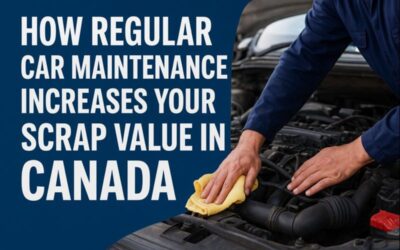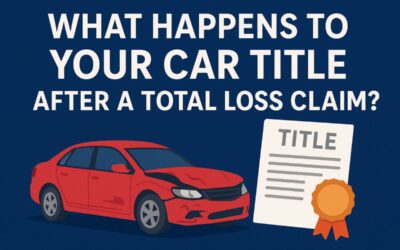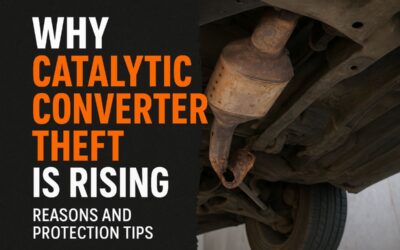Introduction
Letting go of a car you once cared for can feel strange — like closing a small chapter of your life. But scrapping a car isn’t the end of the story. In fact, it’s the start of its final and surprisingly meaningful journey.
Behind the scenes, your old car goes through a regulated process where dangerous fluids are removed, valuable parts are recovered, and its metal, glass, and plastic are transformed into reusable materials. What feels like an ending is really a responsible new beginning — for you and for the environment.
1. Arrival at the Treatment Facility
On the day your car is scrapped, it’s taken to an Authorised Treatment Facility (ATF) or an equivalent recycling centre. These sites are not just scrap heaps — they are licensed, regulated, and designed to handle vehicles responsibly.
Upon arrival, your car is logged into the facility’s system. Documentation is checked — your registration, ownership, and sometimes more — and you may receive a”Certificate of Destruction” or a similar document. This indicates that your vehicle has been officially scrapped, and it helps you deregister it, so you’re no longer legally responsible.
2. Depollution: Removing Hazardous Elements
One of the first and most critical steps is de-pollution. Vehicles carry a variety of hazardous fluids that can be dangerous if released into soil or water. At the ATF, teams carefully drain:
-
- Engine oil
- Transmission fluid
- Brake fluid
- Coolant
- Fuel
- Windscreen washer fluid or other liquids
They also remove the battery (with acid and lead), airbags, and other hazardous components. These materials are handled, treated, or recycled in an environmentally safe way, preventing contamination.
3. Dismantling and Salvaging Usable Parts
After the car is safe, the dismantling begins. Skilled workers go through the vehicle, extracting parts that are still valuable or usable. These include:
-
- Engines and gearboxes
- Transmission, alternators, starters
- Body panels like doors, bonnets, and bumpers
- Interior components — seats, dashboard electronics, wiring harnesses
- Glass, mirrors, and lights, if they are intact
These parts often go on to resellers, used parts dealers, or shops that refurbish them for other vehicles. This reuse reduces waste and extends the life of components.
4. Crushing, Shredding, and Material Separation
Once all the usable parts are removed, the remaining shell of the car is then destroyed. There are a couple of ways this happens:
-
- Crushing/Baling: In some yards, the car shell is crushed or baled into a dense block or cube.
- Shredding: In large facilities, the body is fed into a powerful shredder that breaks it into fist-sized fragments.
After shredding, a sorting process follows. Materials are separated using magnets and other technologies:
-
- Ferrous metals (such as steel) are attracted to magnets.
- Non-ferrous metals (aluminum, copper) are separated using eddy currents.
- Plastics, glass, rubber, fabric, and other residue — often called automotive shredder residue (ASR) — are also sorted.
5. Recycling the Separated Materials
Once sorted, each material goes to its next life:
-
- Steel and iron: Melted down in a furnace and used to make new steel products — maybe in construction, maybe in manufacturing.
- Aluminum and other non-ferrous metals: Recycled and reused in various industries.
- Glass: Recycled into new glass items such as windows or building materials.
- Plastic and foam: Processed, sometimes repurposed into insulation, interior parts, or other plastic items.
- Rubber (e.g., tyres): If removed earlier, tyres may be sent to specialist recyclers, where they are turned into road paving material or playground surfaces.
Also Read: How Metal Prices Influence A Scrap Car Value
6. Legal Closure: Deregistration & Certificate
When the scrapping process is complete, you receive documentation confirming that the vehicle has been destroyed. In many places, this is referred to as the Certificate of Destruction.
You or the facility then notifies the Ministry of Transportation and deregisters the vehicle. This step ensures you won’t be liable for fines, misuse of registration, or other future legal issues related to that car.
7. Environmental Impact: Why Scrapping Matters
Scrapping a car in the right way isn’t just about getting rid of a broken vehicle; it has significant environmental benefits. Recycling reduces the need for mining raw metals, and processing used parts saves energy compared to building new ones.
By repurposing so much — often up to 95% of the car’s materials — the scrapping process supports a circular economy where waste is minimized.
There is a risk, though. If scrapping is done informally or irresponsibly, hazardous fluids and materials may leak. In some areas, inadequate infrastructure for safe disposal leads to soil or water contamination. That’s why using a regulated, authorised facility matters.
8. What You Actually Gain (and Lose) by Scrapping
Gains:
-
- You get rid of a car that is otherwise hard or unsafe to use.
- You can earn money for the scrap value. In regulated systems, price is based on weight, type of metal, and other factors.
- You get legal peace of mind once the car is deregistered.
- You are helping environmental sustainability by enabling recycling.
Loss:
-
- You lose any parts you might have sold separately if you scrap the whole item.
- Scrap value may be a fraction of what the car was worth when new.
- Some leftover residue may still go to a landfill, depending on the facility.
- You give up the vehicle entirely.
- You may lose the chance to sell certain parts separately.
Conclusion
So that old car in your driveway? When it’s scrapped, it doesn’t just disappear. It travels through a well‑regulated cycle: from arrival at the facility, to depollution, dismantling, shredding, and final recycling. Precious metals, plastics, glass — much of it finds a second life. Hazardous materials are dealt with safely. And you, the owner, get legal closure through a certificate and deregistration.
If you choose a trusted service, the process supports sustainability and helps the planet. And if you ever need a reliable provider for scrap car removal, a service like Greenway Auto Recycling makes things smooth and responsible.
